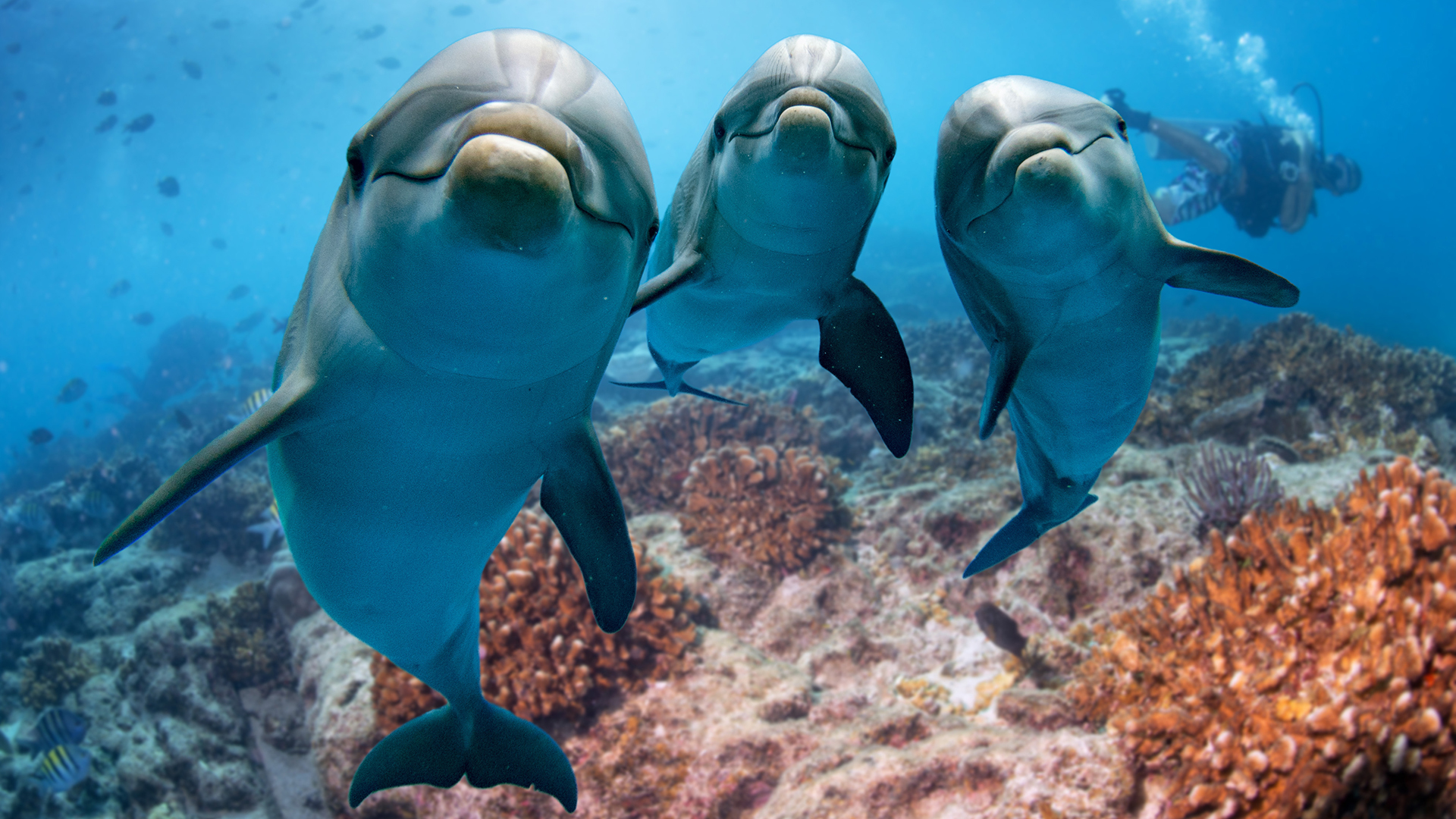The weird reason dolphins drink each other’s pee
For dolphins, friendship is a matter of taste.

Dolphins get to know their friends by tasting their pee, a new study finds. By sampling sips of each other's urine, dolphins demonstrated a type of social recognition that begins with an exchange of whistles that are unique to specific individuals — much like human names.
Scientists have long known that dolphins identify themselves using so-called signature whistles that are different for each dolphin and that they address one another by imitating such whistles. But researchers were uncertain if this copying showed that dolphins associate signature whistles with individual identity or with a more general concept such as "friend."
Recently, scientists learned that not only do bottlenose dolphins demonstrate name recognition, they also replicate this recognition with another sense: taste.
Related: These dolphins taught each other to moonwalk — but it was just a fad
By tasting each other's urine and recognizing the source, the dolphins showed that they could keep track of dolphin identities using two types of sensory input. This means the animals could create and store a mental concept of other dolphins, according to the new study.
Flavorful friends
Researchers discovered that dolphins do this kind of identification via pee-tasting while investigating if the animals are truly calling each other by name when they copy whistles. The scientists conducted what is known as a cross-modal study, in which experiments test if an animal can recognize an object or another animal across multiple cues received from different senses.
Scientists have previously used such experiments in a wide array of animals, including fish and monkeys. But communication systems in most animals lack sounds that are recognizable as labels for individuals, such as dolphins' signature whistles, the researchers wrote.
Sign up for the Live Science daily newsletter now
Get the world’s most fascinating discoveries delivered straight to your inbox.
However, finding a second sense in dolphins that was testable under laboratory conditions was challenging. Testing dolphin sight or echolocation would "involve moving giant monitors or even the dolphins themselves around, which is impossible," said lead study author Jason Bruck, a biologist at Stephen F. Austin State University in Texas. But dolphins are known to swim through other dolphins' urine plumes, mouths agape, and they may do so to get social information "the way a dog sniffs a hydrant," Bruck told Live Science.
"Except dolphins would have to do that with taste, not with smell," as the cetaceans lack olfactory bulbs, he added.
A question of identity
Researchers found that dolphins spent roughly three times as long sampling urine from unfamiliar dolphins as they did from familiar ones. This suggested that the animals could identify known fellows by taste.
To test for persistence of identification across senses, researchers paired recordings of signature whistles with urine from dolphins: in some of the pairings, the urine came from the whistler, while in others it was produced by a different dolphin. The scientists then introduced dolphins to the sound of a whistle and the taste of a urine sample.
Related: This whale-dolphin hybrid is not a 'wholphin.' Here's why.
When the pee matched the whistle, listening dolphins lingered closer to playback speakers. This indicated that the animals recognized the consistency in signals perceived by two senses — taste and hearing — and that both taste and sound came from the same dolphin.
These findings mean that for dolphins, whistles represent the specific dolphin's identity in other dolphins' minds, including the taste of that dolphins' pee.
"We now know that when a dolphin produces that signature whistle, they really are referring to that dolphin they're copying," Bruck said. "They are using those whistles in much the same way that we use names."
Lipid mechanisms?
Future studies could investigate the mechanisms behind this newly discovered dolphin ability, Bruck said. Dolphins' taste-driven identification may be driven by lipid recognition; if so, dolphin research may reveal a lipid-sensitive taste bud that's bigger and more robust than the human variety and therefore easier to study. Such a discovery could inform research into obesity in humans, Bruck said.
More fundamentally, these findings could open new avenues of dolphin research, Bruck added. "Transmitting social information from dolphin to dolphin [is] as easy as [using] an underwater speaker" and could offer insights into "how dolphins perceive each other as individuals," he said.
The findings were published May 18 in the journal Science Advances.
Original article on Live Science.

Michael Dhar is a science editor and writer based in Chicago. He has an MS in bioinformatics from NYU Tandon School of Engineering, an MA in English literature from Columbia University and a BA in English from the University of Iowa. He has written about health and science for Live Science, Scientific American, Space.com, The Fix, Earth.com and others and has edited for the American Medical Association and other organizations.










